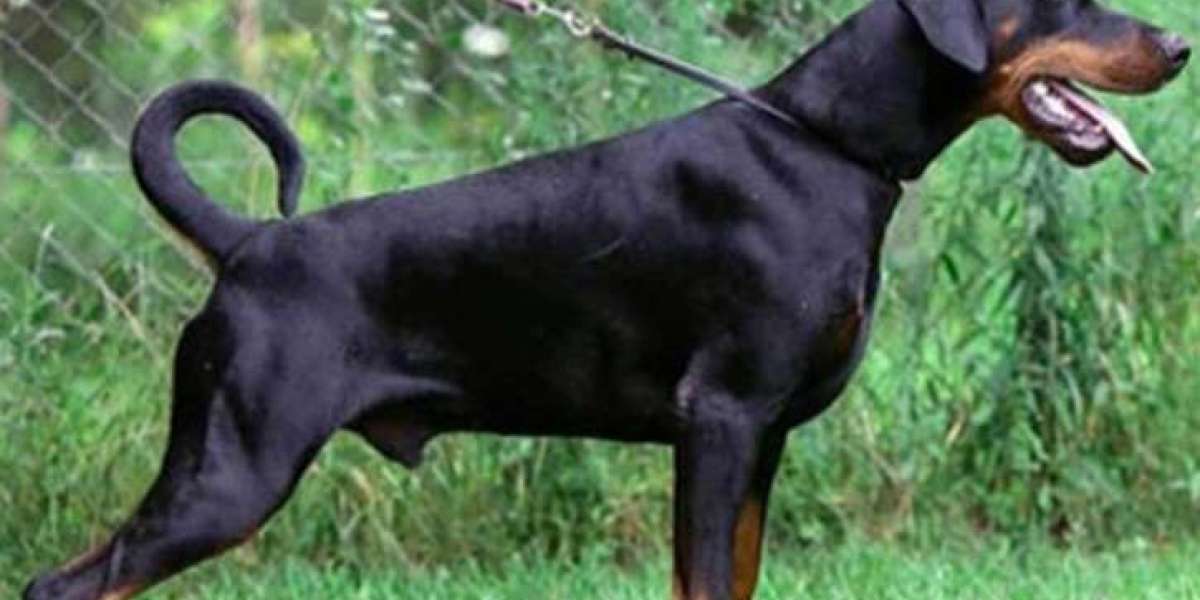Dog shows are a fascinating world where canine beauty, structure, and temperament are on display for judges and enthusiasts alike. Among the breeds that captivate audiences in the show ring are the European Doberman puppy and the American Doberman puppy. While they share a common ancestry, there are distinct differences between these two varieties that influence their performance and presentation in the show ring. In this guide, we'll delve into the world of dog shows and compare the European Doberman and the American Doberman, shedding light on their respective strengths and characteristics in the quest for conformation glory.
Origins and Breed Standards
The European Doberman and the American Doberman both trace their lineage back to the original Doberman Pinscher breed developed in Germany by Karl Friedrich Louis Dobermann in the late 19th century. However, over time, the breed diverged into two distinct varieties with subtle differences in appearance and temperament. European Dobermans, also known as "working" or "show" Dobermans, adhere more closely to the original breed standard established in Europe, with a focus on functionality, structure, and working ability. American Dobermans, on the other hand, have been selectively bred for a sleeker, more refined appearance, with an emphasis on aesthetics and showmanship.
Physical Appearance
One of the most noticeable differences between European and American Dobermans is their physical appearance. European Doberman puppies tend to have a broader chest, thicker bone structure, and a more substantial overall build compared to their American counterparts. They typically exhibit a more pronounced stop, deeper chest, and thicker neck, giving them a more robust and muscular appearance. In contrast, American Dobermans have a sleeker, more refined silhouette, with a narrower chest, finer bone structure, and a more elegant carriage. Judges in the show ring evaluate each dog based on how well they adhere to their respective breed standards, including their overall balance, proportions, and movement.
Temperament and Personality
Both European and American Dobermans are known for their loyal, affectionate nature and their unwavering devotion to their families. However, there may be subtle differences in temperament between the two varieties due to their breeding history and selection criteria. European Dobermans tend to have a slightly more assertive and protective demeanor, reflecting their origins as working dogs bred for guarding and protection. They may exhibit greater confidence and independence, which can be advantageous in certain performance events such as obedience and protection sports. American Dobermans, while still protective, may have a slightly softer temperament and may be more adaptable to various living situations, making them well-suited for the show ring.
Performance in the Show Ring
In the show ring, European and American Dobermans compete in conformation events where judges evaluate their adherence to the breed standard and overall appearance. European Doberman are often favored for their robust build, strong movement, and commanding presence, which exemplify the breed's heritage as a versatile working dog. They may excel in events such as conformation, obedience, agility, and protection sports, where their intelligence, athleticism, and trainability shine. American Dobermans, with their sleeker, more refined appearance, may captivate judges with their elegant movement, graceful demeanor, and eye-catching presentation. They may excel in events such as conformation, where their showmanship and charisma can make a lasting impression on judges and spectators alike.
Training and Preparation
Preparing a Doberman for the show ring requires dedication, patience, and attention to detail, regardless of whether they are of European or American lineage. Owners and handlers must focus on grooming, conditioning, and training to showcase their dog's best qualities and maximize their chances of success in the ring. European Dobermans may benefit from additional training in obedience and protection work to highlight their working abilities and natural instincts. American Dobermans, with their emphasis on aesthetics and showmanship, may require extra attention to grooming and presentation to create a polished and striking appearance in the ring. Regardless of their lineage, a well-trained and well-prepared Doberman is essential for success in the competitive world of dog shows.
Conclusion
In the world of dog shows, European and American Dobermans each bring their unique strengths and characteristics to the ring. While European Dobermans embody the breed's heritage as versatile working dogs with a robust build and strong movement, American Dobermans captivate with their sleek, refined appearance and graceful demeanor. Whether competing in conformation, obedience, agility, or protection sports, both varieties showcase the beauty, intelligence, and athleticism of the Doberman breed. By understanding the differences between European and American Dobermans and appreciating their individual qualities, enthusiasts can celebrate the diversity and versatility of this iconic breed in the competitive arena of the show ring.








